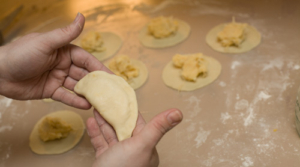 Join us on Sunday, January 27th for an immersive experience in Ukrainian culture and cuisine. We will pinch, cook and eat together as our workshop presenters share stories and songs from this rich traditional culture. Bring a rolling pin and a tray!
Join us on Sunday, January 27th for an immersive experience in Ukrainian culture and cuisine. We will pinch, cook and eat together as our workshop presenters share stories and songs from this rich traditional culture. Bring a rolling pin and a tray!
“While pyrohy were a regular part of meals in our household, they were especially important during festive events like weddings, church functions or Christmas. On Ukrainian Christmas Eve (Svyata Vechera) pyrohy were made with homemade cottage cheese, sauerkraut, potato and prune fillings as part of the twelve traditional meatless dishes. The prune filling was especially memorable to me as a child as it was made only during Christmas and it was like having a dessert during the main part of the meal. Sour cream and a sauce made from high bush cranberries (kalyna) were used as a dressing.” -Ed Andrusiak, Galiano resident, Ukrainian- Canadian
“To me, pyrohy are the ultimate comfort food from my childhood. They evoke memories of my grandmother, mother and all my female relatives in somebody’s big kitchen, laughing, singing, talking and arguing while peeling potatoes, grating cheese, chopping onions, mushrooms and sauerkraut, and making and rolling out paper-thin dough. Then we would put potato and cottage cheese or sauerkraut and mushroom filling, my two favourites, gently into each circle and finally fold and lovingly pinch it closed before plopping them—one by one—into huge pots of boiling salted water. Dining on a plateful of these precious, delicious dumplings, sliding around in butter and sour cream, is heaven on earth. – Christina Stechishin, Galiano resident and great-niece of Savella Stechishin, author of Traditional Ukrainian Cookery
I grew up eating pierogies and they are deep in my Polish soul. I love to eat them but I also really enjoy the way people gather to make them. Spreading flour on a kitchen table, making the dough, preparing filling and
boiling the water in a big pot. Everyone got their hands dirty to create a mythical half-moon shape stuffed with their favorite filling. After a few minutes in boiling water, the pierogies would land on our plates and the feast began. We shared the work together and we also shared stories about our best pierogi recipes. We reminisced about people in our lives and all the moments spent with our family and friends preparing pierogies to celebrate the beauty of life. -Konrad Dwornik, Galiano resident, born in Poland
“It was my favourite food as a child. I grew up being part of the assembly line. There would be at least three generations at the table pinching the pyrohy, cousins, aunties, grandmas, and kids. The matriarchs always bragged about how many they made. You don’t just make a few!” -Beverly Dobrinsky, founder of Zeellia, Slavic Soul and director of Barvinok Ukrainian Choir
“Homemade perogies remind me of my aunt Beverly’s kitchen, her Christmas Eve dinner and her way of bringing Ukrainian music and food together. I’ve always stuffed them too big and I still do. Before dinner, I would pester my aunt to find out how many dozen we had made this year as my mom nudged me to leave my busy, flour-dusted aunt alone. As kids, my brother, cousins and I would compete over who could eat the most. I was so greedy and just wanted to stuff as much as I could into this one magical night of the year. Maybe that’s why I love to make and share perogies now.” -Brahmi Benner, Galiano resident
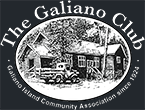
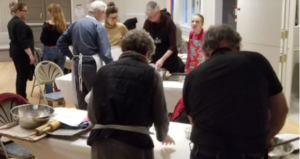
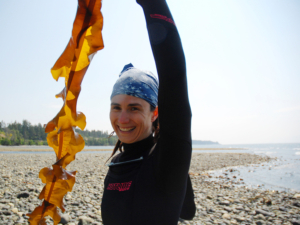 Last June’s Seaweed Harvesting Workshop was one of the most popular we’ve run, and so we are thrilled to be able to bring Amanda Swinimer back. Participants appreciated being given the opportunity to learn both at the beach and in the classroom, as well as getting to taste many varieties of seaweed. Here’s some of what they had to say about the workshop:
Last June’s Seaweed Harvesting Workshop was one of the most popular we’ve run, and so we are thrilled to be able to bring Amanda Swinimer back. Participants appreciated being given the opportunity to learn both at the beach and in the classroom, as well as getting to taste many varieties of seaweed. Here’s some of what they had to say about the workshop: Join us on Sunday, January 27th for an immersive experience in Ukrainian culture and cuisine. We will pinch, cook and eat together as our workshop presenters share stories and songs from this rich traditional culture. Bring a rolling pin and a tray!
Join us on Sunday, January 27th for an immersive experience in Ukrainian culture and cuisine. We will pinch, cook and eat together as our workshop presenters share stories and songs from this rich traditional culture. Bring a rolling pin and a tray!  It is one of the sweetest sounds of late summer. The soft, ping, ping as the jars on the counter seal. It is one of the most satisfying sites – rows of translucent, jewel toned jars, filled and ready to be stored. It’s rewarding to see shelves filled with sparkling jars of homemade preserves, made from the freshest fruit, put by for the winter.
It is one of the sweetest sounds of late summer. The soft, ping, ping as the jars on the counter seal. It is one of the most satisfying sites – rows of translucent, jewel toned jars, filled and ready to be stored. It’s rewarding to see shelves filled with sparkling jars of homemade preserves, made from the freshest fruit, put by for the winter.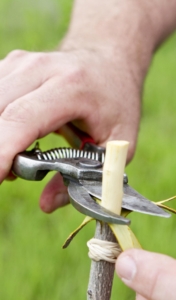 RESCHEDULED to MARCH 25 9:00am-3:00pm
RESCHEDULED to MARCH 25 9:00am-3:00pm